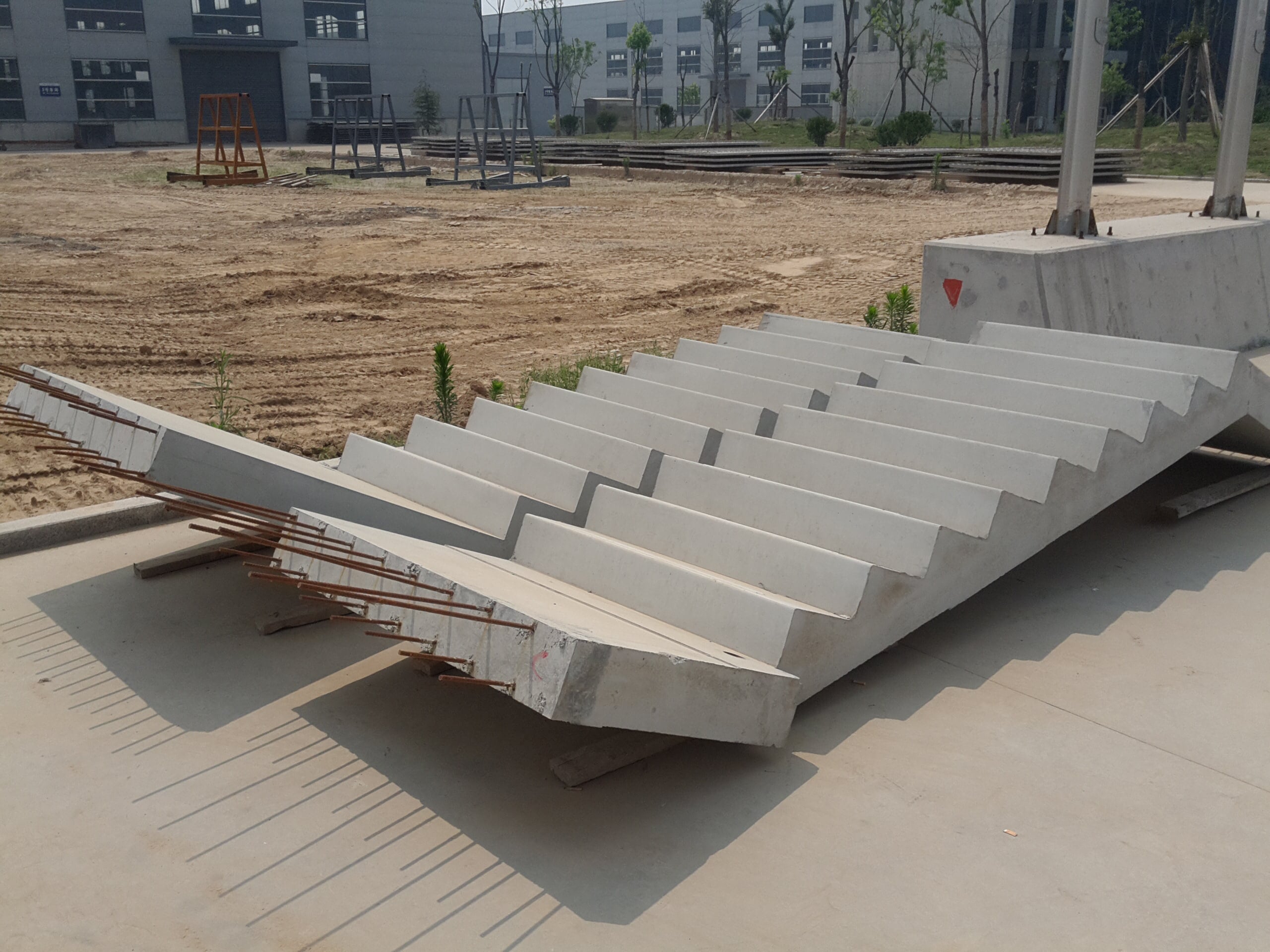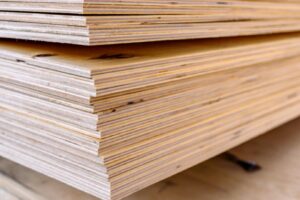Precast concrete steps are ready-made cement stairs, staircases, or hollow cement steps that can be installed outside of existing staircases on a property or business premise. They are usually made from reinforced steel and concrete and are sealed with weather-resistant protection.
Generally, homes and businesses opt for precast steps over other types of installed concrete steps and unusual shapes of staircases for cost little maintenance-related reasons. These steps are affordable and fast to install, saving time save money and overall cost and save money on labor costs.
Being constructed of steel and concrete, they are also a strong, durable, and long-lasting option for homes, warehouses, and other high-traffic entryways. Keep reading to learn the costs, custom designs, sizes, and main advantages of using precast steel bars and concrete steps.
Are Precast Stairs Cheaper?
Installing for basement stairs or exterior stairs on a property is generally considered a cheaper option than other types of exterior steps. Cement exterior basement stairs can last a long time (up to 80 years when well-maintained) and are a low-maintenance alternative compared with wood, metal, or masonry steps.
Metal stairs with handrails are the most expensive, with quotes in the thousands, depending on how large the staircase needs. Wooden steps are the cheapest option, with DIY methods to replace concrete steps with wood steps, with wood framing only costing a few hundred dollars.
Masonry steps are usually installed as part of a patio or driveway and can cost hundreds or thousands, depending on the style of brick or slab used for the staircase.
How Much Do Pre-Made Steps Cost?
Costs for a precast concrete staircase and steps vary depending on the size, manufacturer, and installation charges, but most staircases can cost between $70-$100 per step on average. For a standard 4-8 step precast concrete staircase, this can cost between $280-$800 square foot.
Poured concrete steps can cost more because of the longer installation period and labor costs for the additional concrete required. The average cost for traditional concrete steps can be between $400-$650.This includes the cost of labor, which, if you DIY concrete steps, will be cheaper.
Are Precast Concrete Steps Good?
Precast concrete steps are the preferred choice for residential and commercial properties for various reasons. Firstly, precast steps come ready-made, making construction quick, easy, and affordable. The steps can be installed in a day and can be used almost immediately after installation.
Secondly, being made from concrete and a reinforced structure, the steps are manufactured to the highest standards, making them durable and long-lasting.
When sealed with a weatherproof cement coating routinely, they can last a long time without the concrete cracking or flaking. They are also strong, reliable, and don’t require repainting or resealing, unlike wooden or metal stairs.
However, despite their advantages, there are some disadvantages to precast concrete steps. Compared with stairs created by pouring cement into molds, precast concrete steps cost may not last as long. Durability depends on how much precast concrete steps cost, sizes and advantages, well the steps are reinforced internally (with steel lasting longer than plywood), and how much concrete or poured concrete that is used for the stairs.
Hollow precast concrete steps are cheaper than solid, hollow precast concrete steps cost but hollow and install steps are not as strong as hollow staircase steps, nor do they last as long.
What Sizes Do Precast Concrete Steps Come In?
Delivered ready-to-install, precast concrete steps are available in standard sizes that enable quick fitting. Exact sizes may vary depending on the manufacturer, but generally, each precast concrete steps cost sizes and advantages each step is 7 inches high with a 12-inch-deep tread.
Sizes of precast staircases are available are typically the stairs range between 3-8 feet in width. When choosing steps, you can also select which size landing you want (which is the top step). Precast concrete steps either come with no landing, a 24-inch landing, or a 48-inch landing.
Custom-sized precast concrete steps are available from various manufacturers, but these are more expensive than the standard sizes available. Most manufacturers sell precast concrete steps in multiples of two. For example, you can buy a precast concrete staircase with two steps, four steps, six steps, or eight steps.
How Long Do Precast Concrete Steps Last?
A precast concrete step is a popular alternative to wooden stairs because they are durable and long-lasting. When well-maintained with bi-annual weather protection sealant, precast concrete steps can last between 20-40 years, on average.
Precast pouring concrete steps are manufactured with either plywood or steel before being overlaid with . Reinforced plywood pouring concrete steps can last a long time, provided the concrete is sealed properly and harsh chemicals are not used on the surface.
Precast steps constructed with steel or iron can last longer than plywood, up to 80 years. They are often better for areas where the steps need to hold heavy weight and are subject to extremely high foot traffic or routine to withstand heavy traffic impact, for example, in a warehouse or business premise.
Regardless of cement quality or whether plywood or metal is used for indoor cement stairs or precast stairs when the footings fail, precast steps will need to be removed and rebuilt. It’s impossible to repair the pouring cement steps after they’ve collapsed without first dissembling the entire structure.
To prolong the lifespan of steps, apply a weatherproof sealant to precast concrete products routinely, allow it to set fully after installation (waiting at least 2-3 days), and avoid using harsh salts or chemicals on the step products’ surface when cleaning.
Alternatives to precast concrete stairs or steps include traditional cement steps (manufactured by pouring concrete into your molds), masonry steps, metal steps, metal railings, and exterior wood steps. How long these steps last vary, but most alternatives won’t last as long as stairs or steps, making stairs or units of these of the most durable materials for exterior steps.
| Type | How Long Do They Last? |
| Wood Steps | 15-35 years |
| Masonry Steps | 20-30 years |
| Concrete Steps | 20-30 years |
| Precast Concrete Steps | 20-40 years |
| Metal Steps | 50-80 years |
What are the Advantages ?
1. Affordable
Precast concrete steps are an affordable option for businesses, homeowners, and industrial areas. Because construction takes place in bulk off-site, manufacturing, and installation are quicker than average compared with decked concrete stairs, poured-in concrete steps, and masonry staircases.
Additionally, standard steps with cost-effective sizes and advantages are available that generally meet the needs of most properties.
Decked natural stone, metal, and masonry steps require custom sizes and are built on-site, which equates to higher material and labor costs and installation costs compared with precast install concrete steps.
2. Low Maintenance
Another advantage of precast concrete steps is their low maintenance needs. Being highly durable and weather-resistant when sealed, they don’t require repainting, like metal staircases do.
While the more solid concrete steps should be routinely sealed, annual treatments are unnecessary, unlike decked or wooden areas. Cleaning after installing concrete steps is also easier than other types of staircases. The smooth surface is easy to sweep to remove debris and jet wash/hose down with water to remove dirt.
3. Quick Installation
Being premade and ready to install upon delivery, precast concrete steps offer a quick installation. Unlike poured-in concrete stairs, the material does not require any setting time, so they can be used almost immediately after fitting.
Generally, these types of steps existing stairs can be fitted in a couple of hours by the right contractor or in 1-2 days for larger steps landscape stairs solid steps that require sealing after installation.
4. Aesthetics
Another benefit of installing concrete steps is the aesthetic appeal they offer. The surface of concrete stairs is smooth with a white-grey color, giving it a clean and even finish.
Being easy to clean and less likely to fade, crack, or flake (compared with other types of steps, like wood, decking, or metal), concrete steps add a pleasant look to the front of a property.
5. Durability
One of the most important benefits is that they are incredibly durable. Protected units install on steps are also highly resistant to impact and harsh weather conditions.
Unlike traditionally poured , which can crack and crumble over time, precast concrete is designed to last a lifetime. They also often come with a warranty from the manufacturer, so if the steps collapse, they can be replaced without cost.
Summary
Precast concrete steps are one of the most durable types of staircases you can get for a property, warehouse, or business premise. Many contractors have made the switch to installing steps over traditional molded concrete stairs for many reasons, including because they are strong, affordable, and quick to install-saving you time and money.




